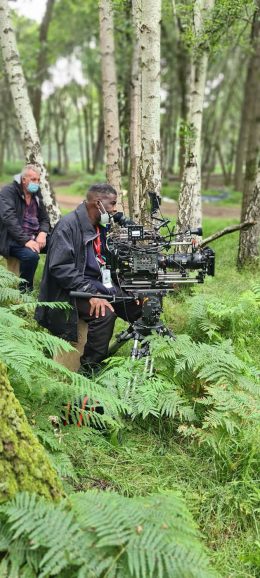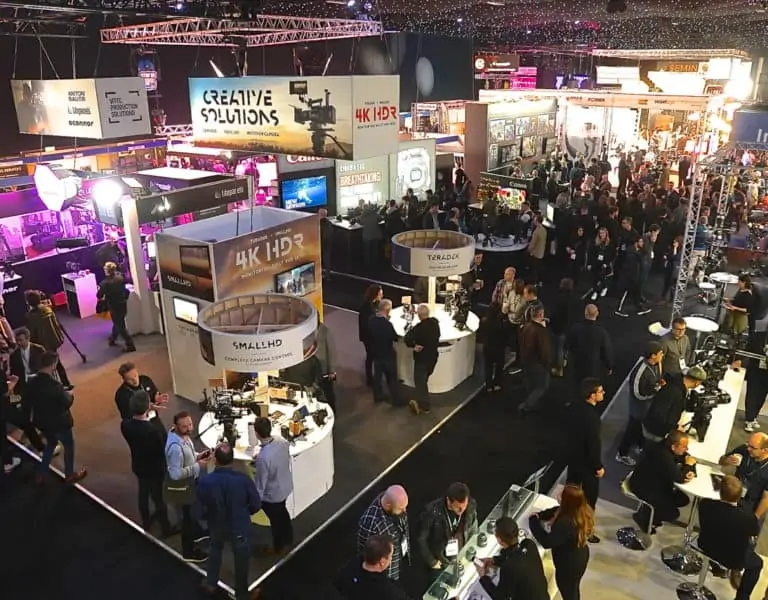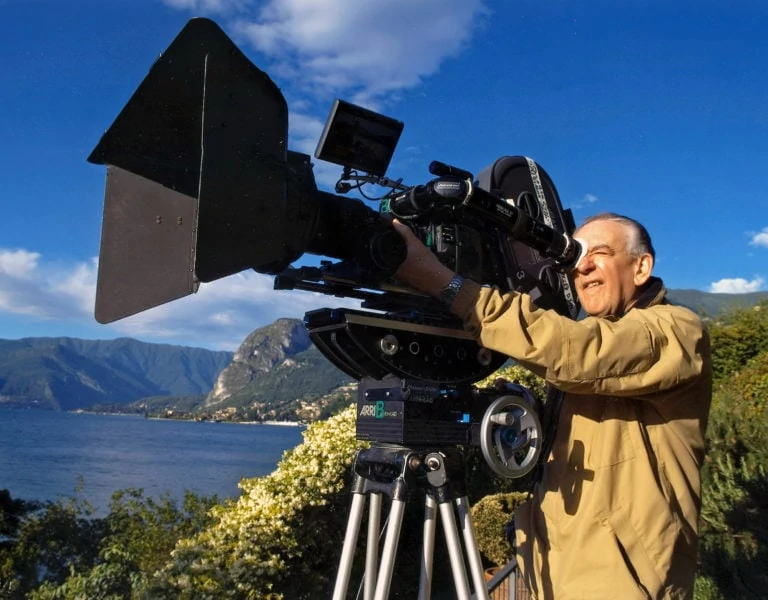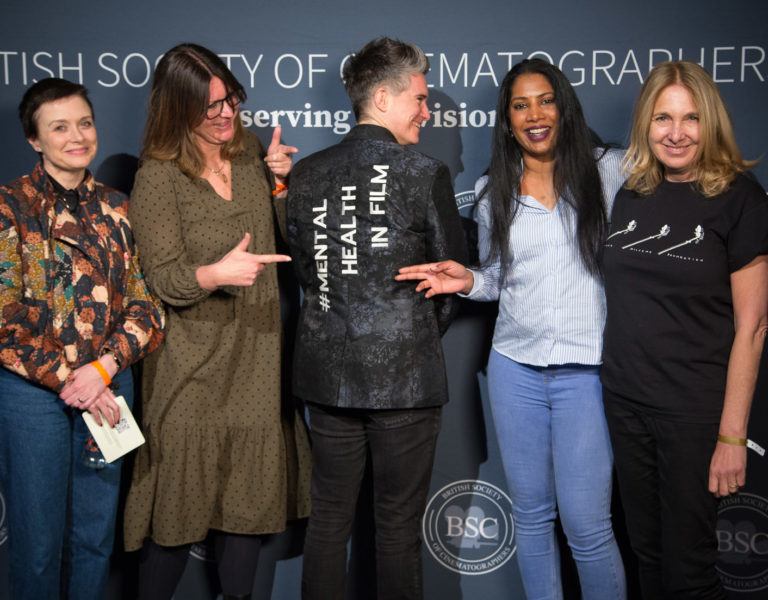It hasn’t been an easy ride for new BSC member Kelvin Richard to reach the highest echelons of the craft. He shares his rise through the camera department to date and reflects on joining the Society’s ranks.
Where it all started.
A toy projector for Christmas! The advert in the Littlewoods home order catalogue. There was something special about seeing a tiny moving image being projected on the wall which to me was magical. I was 13 years old.
There was not a lot of money: cardboard inserted to cover the holes in your school shoes type of thing was the reality. We were two families (my mum and my aunt, seven people) in two rented rooms on the top floor of a small, terraced house in ‘60s/’70s Kilburn, London, NW6. My mother, who was working two jobs and raising two boys on her own, me, asking for that toy projector… The sacrifices she must have made to make it happen!
I collected 50ft 8mm reels of film: cartoons, the comedies of Laurel and Hardy, Buster Keaton, Harold Lloyd and horror movies. I would project those, creating a tiny image, onto my kitchen wall, but it would be only a matter of time before I wanted to project something that I had created myself.

Teenage years
I went to the local comprehensive school and kept pestering one of my art teachers if they had a Super 8mm camera. He said: “There is a box of junk in the media recourses centre, there might be an old camera there. If you find one and can get it to work, you can try and use that.”
At the very back of that space I found what was to be my first shooting camera, a Eumig Viennette 2; dirty, neglected, no instruction manual, no batteries – nothing! I was on my own.
I would get local library books on filmmaking and how to shoot Super 8mm. Over the next year I would save my pocket money, birthday and Christmas cash, and buy rolls of Super 8mm film, expose it in the camera and get the results back – with varying degrees of disappointment! Why is some of it out of focus? Shot inside with room lighting, why is it all yellow?
It was a long process of self-learning about minimum focus on zoom lenses and colour temperature, colour correction filters etc., with no one to advise or guide me around my mistakes. The results looked up and tried again on the next roll of film. Lessons learned and expanded on, that I would still use to this day!
Over the next year I would teach myself animation (clay models as well as paper drawing animation) as well as some live action. I would shoot and edit short films and enter them into various 8mm competitions and even win a few awards in the UK and overseas. One of them, Blood Shot Eyes, was even shown on the BBC’s Screen Test programme presented by Michael Rod, as a competition runner-up! A visual interpretation of Dub Reggae music, would you believe.
I knew from the age of 15 that working in the film industry was what I wanted to do.
Looking back now, how single-minded I was, stubborn and naïve in equal measures, just to do the next thing, to get to the next level.

Starting out
Not knowing anybody in the film and TV industry – or how, or even where, to start to look to get in, I needed help! My Brent Council career officer, who had seen the local ‘Young Film Maker’ newspaper coverage about me, made every effort to get me to meet anybody connected with media that might help. That included BBC Radio London (Alex Pascal OBE), any crew, press journalists, TV studio crews, BBC and freelance documentary producers.
One of those chance meetings was with the manager of Samuelson Film Lighting in Dollis Hill, Graham Anderson. He said he was impressed that I had got this far by making my own short 8mm films, entering them in film competitions and winning a few awards, I even organised lunchtime film shows at school where I would show my animations with some hired in 8mm library films to the older pupils. He knew there was a vacancy at Samuelson’s W1 office (‘Rentacamera’ on Broadwick Street) and sent me there to interview. I was successful. My first step in!
I worked at Rentacamera for almost four years working my union ticket (it was ACTT not BECTU in those days and I was very proud that Harvey Harrison BSC was one of my application signatories). It was a small camera department there of three technicians, handling some Arriflex 35mm (BL, 2C) and Arriflex, Aaton and Éclair 16mm film cameras, film lenses and filters. In the same building upstairs was AKA films and also Document Films with a young Barry Ackroyd BSC and Mike Fox BSC, both of whom I would work with later as a freelance clapper loader and camera assistant when I left ‘Sammys’.
I used to go down at the weekends to Samuelson’s head office in Cricklewood, London, NW2, to get my hands on the bigger Mitchell and Panavision cameras to practice my loading, lacing and oiling points of the various 35mm camera movements used on commercials and features. Brushing shoulders with the more experienced like Duncan Humphreys and Ben Davis BSC, who would have been 1st ACs then in prep on their own shoots.

An act of kindness
I had a car crash in my second year at Sammy’s. I was 18 and I thought that being in hospital for two months in traction and then on crutches for many more months after that, would be the end of this chance I had of working in the film industry. One day in hospital, to my surprise at the end of the hospital ward, I could see Sydney Samuelson walking towards me. The head of Samuelson Film Services!
Sydney was so gracious. After spending some time with me, he said, “You look after yourself and get yourself better. Your job is safe and will be there for you when you get back on your feet.” That single act of kindness allowed me to get back to my job at Rentacamera and finally get my full union card, pursue my career through the ranks of camera assistant, clapper loader, and focus puller-1st AC to become a DP/cinematographer.
As a freelancer, I worked as a camera assistant, clapper loader and 1st AC for many years working on documentaries, feature films and many music videos, working mainly with Jeff Baynes, Chris Cox and Simon Archer BSC, through Nic Knowland BSC’s company Tattooist International. Plus working with Philip Chavannes, Roy Cornwall, Witold Stok BSC, Mike Southon BSC (Paper House, dir. Bernard Rose), Elphida, Gothic (dir. Ken Russell), and Captive, a documentary in Nigeria with Walter Lassally BSC, and some dailies with David Watkins BSC, John Mathieson BSC and David Tattersall BSC on music videos and commercials.
Over the years as a cameraman I have shot many productions across documentaries, music videos, shorts, TV drama series, commercials and a feature film. Amongst my favourites are: Walter’s War (dir. Alrick Riley), In The Long Run series two and three (dir. Sandy Johnson/Ian Aryeh), McDonald and Dodds (dir. Ian Aryeh, drama), The Stephen Lawrence Story (documentary, also as the director – RTS Award), Heart of Harlesden (dir. Jackie Osei Tu-Tu, documentary series), feature film in Nigeria Beyond Blood, and Live from Abbey Road series one and two (dir. Annabel Jankle).

BSC honour
Being voted in now as a full member of the BSC is indeed a great honour! I was proposed to the BSC by Nic Knowland BSC and seconded by Mike Southon BSC. Being a member of the BSC always seemed out of reach to someone like me; self-taught/non-film school/low income household/from a diverse background. The eligibility criteria years ago was a number of UK features or the largest TV drama credits. Today, it is indeed refreshing to see that concerted efforts are being made to have a rejuvenated approach, to still be rigorous in selection but be more inclusive, not only to women but the even harder to reach Black and Asian, male and female practitioners.
The workshop training, screenings and mentoring initiatives are a great advertisement for the society and should attract a wider variety of applicants for future years. In doing so making the BSC even more relevant to today’s future cinematographer’s and industry.
In fact, although the BSC membership is not a reward for ‘long service’ it is arguably those who have served over many years in this, the most challenging and rewarding of industries over time, that maybe should not get overlooked and get the recognition now for works done and are still to do! From my beginning as a young teenager the attachment of BSC after your name was something to aspire to: it represents a standard of British cinematography recognised worldwide.

The camera department within the film industry is very competitive – that should be of no surprise to anyone! It is indeed a great thing to get the chance to show what you can do on any production and they do not get much bigger recently for me than the multimillion-pound Shondaland/Netflix production, Bridgerton series two. Working at that level as second unit DP with main unit DPs Jeff Jur ASC and Philipp Blaubach BSC, on that scale for the whole series, was a delight and I continue looking forward to get even more creative and challenging opportunities for my own lead blocks on major TV dramas and more feature films in the near future.
At present, as well as meetings and reading scripts, I have completed my USA filming on The Colour of Victory: Heroes of WW2 narrated by Idris Elba for Nat Geo/October Films/Green Door Pictures and episodes four and five of the TV drama Grime Kids (Mammoth Screen/BBC), written by BIFA award winner Theresa Ikoko and directed by Ian Aryeh.
Kelvin Richard BSC is now represented by Madeleine Pudney at United Agents.


















